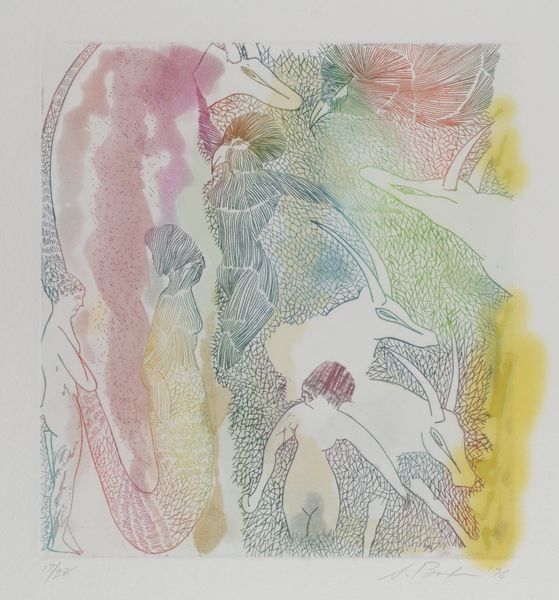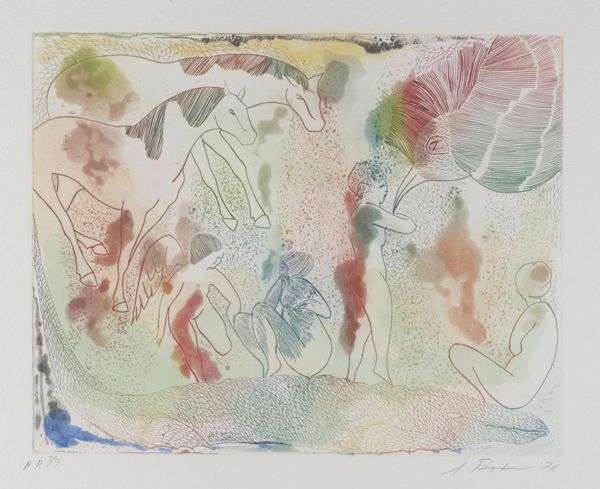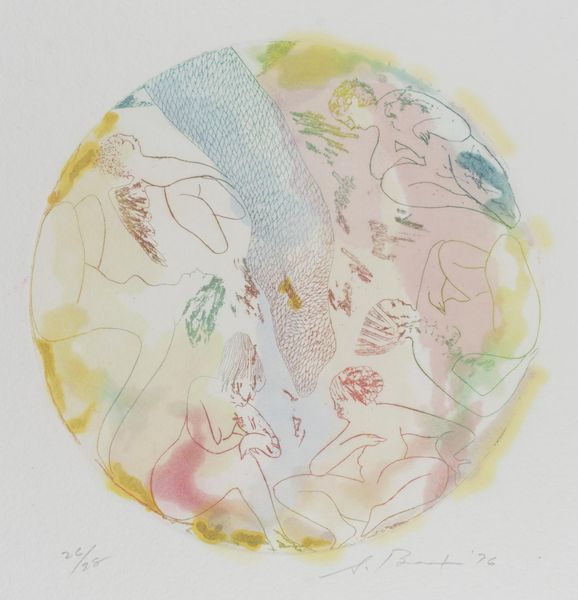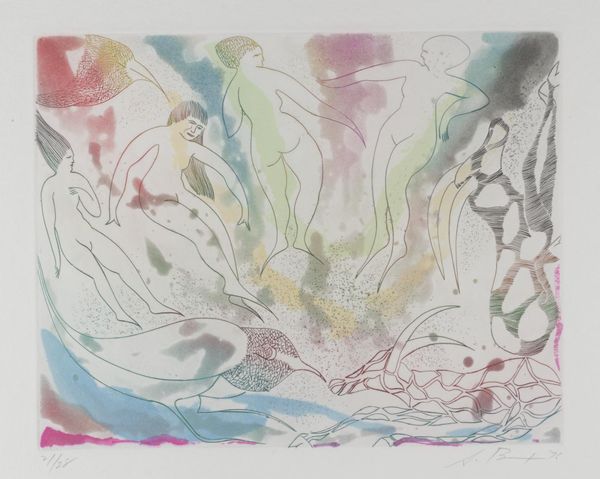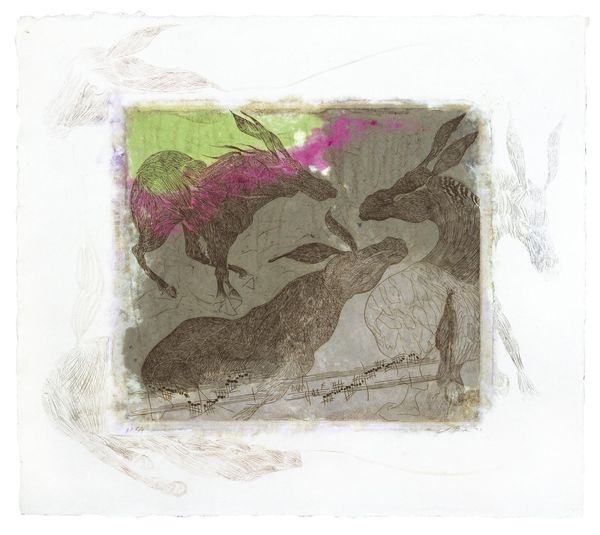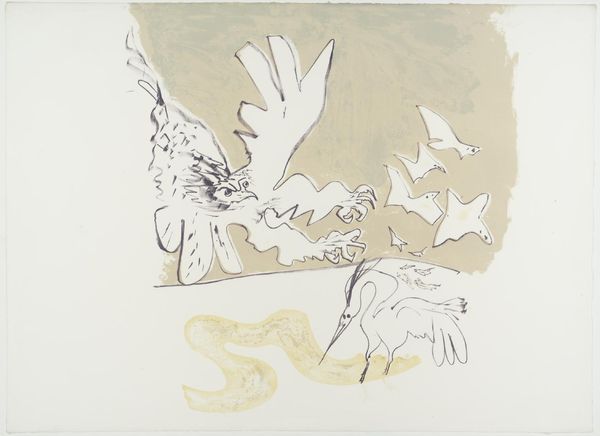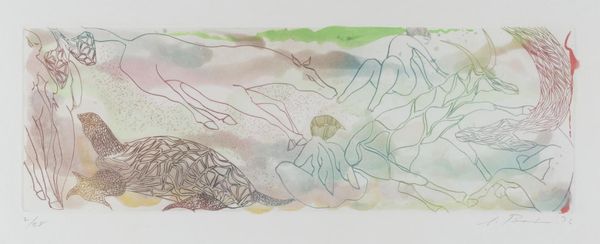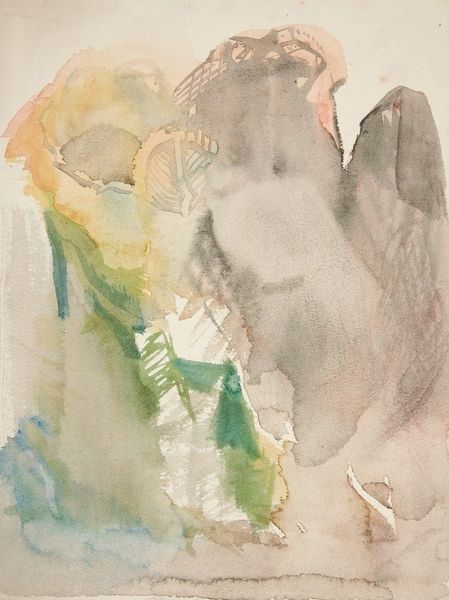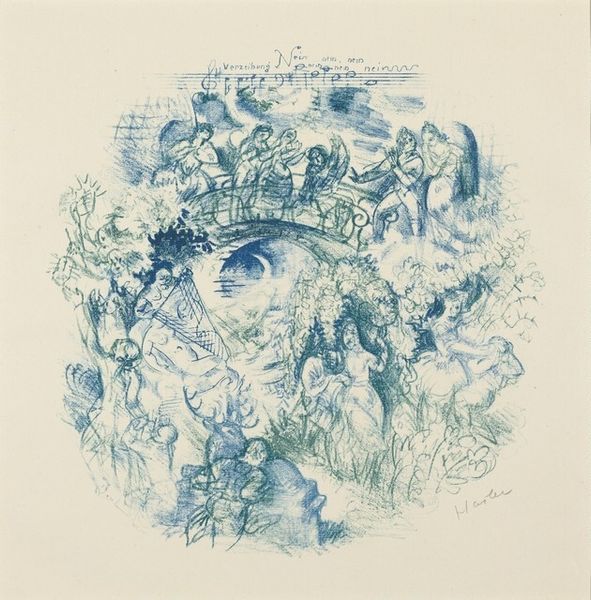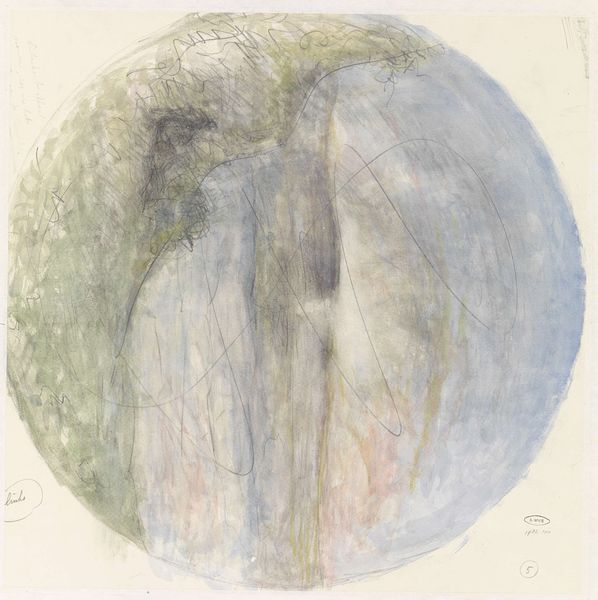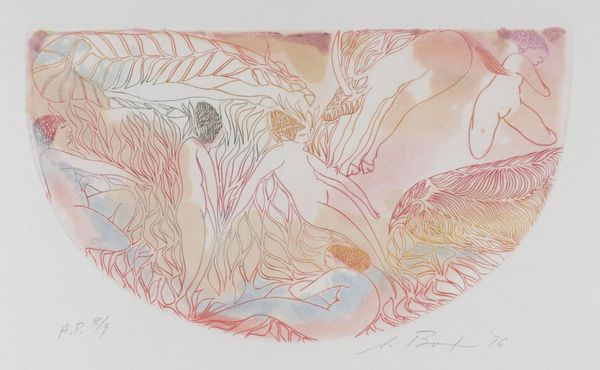
Dimensions: image: 331 x 360 mm
Copyright: © The estate of Stanley Boxer | CC-BY-NC-ND 4.0 DEED, Photo: Tate
Curator: This is Stanley Boxer's "Gatheringforsomereason," now held in the Tate Collections; the date of its creation is unknown. Its dimensions are 331 by 360 millimeters. Editor: The composition strikes me as both dreamy and unsettling. The delicate lines and pastel washes create a sense of ethereal beauty, but there's an underlying tension, a vulnerability. Curator: Boxer's process is fascinating. He often combined etching with monotype, layering textures and colors through printmaking. This piece showcases his mastery of line and his experimental approach. We can see the hand of the artist in every mark. Editor: Absolutely. And those nude figures amidst the fauna, combined with the title—it hints at hidden social dynamics. Perhaps a commentary on the vulnerability of the body, or the role of women within a social landscape? Curator: It invites us to contemplate the labor involved in printmaking, and the deliberate choices Boxer made with his materials. He elevates the craft. Editor: True, and it pushes us to consider how art can mirror, and perhaps critique, societal norms, especially where gender and nature intersect. A beautiful, complex piece.
Comments
tate 8 months ago
⋮
http://www.tate.org.uk/art/artworks/boxer-gatheringforsomereason-p12053
Join the conversation
Join millions of artists and users on Artera today and experience the ultimate creative platform.
tate 8 months ago
⋮
Stanley Boxer is best known for his large scale abstract paintings which have a rich sculptural quality produced by thick, impasto brushwork. Boxer’s paintings were championed by American modernist critic Clement Greenberg (1906-1994), famous for his insistence that painters should eliminate subject matter in their work, aiming instead for the purity of abstraction. When considered in relation to his paintings, the prints Boxer produced at Tyler Graphics between 1975 and 1979 seem somewhat of an anomaly. Over this period, he created several series of figurative works, illustrating whimsical scenes featuring animals and winged figures. Boxer had, however, been making drawings of this nature throughout his career, and he insisted they were closely connected to his abstracts, made with similar gestures and motivation.
